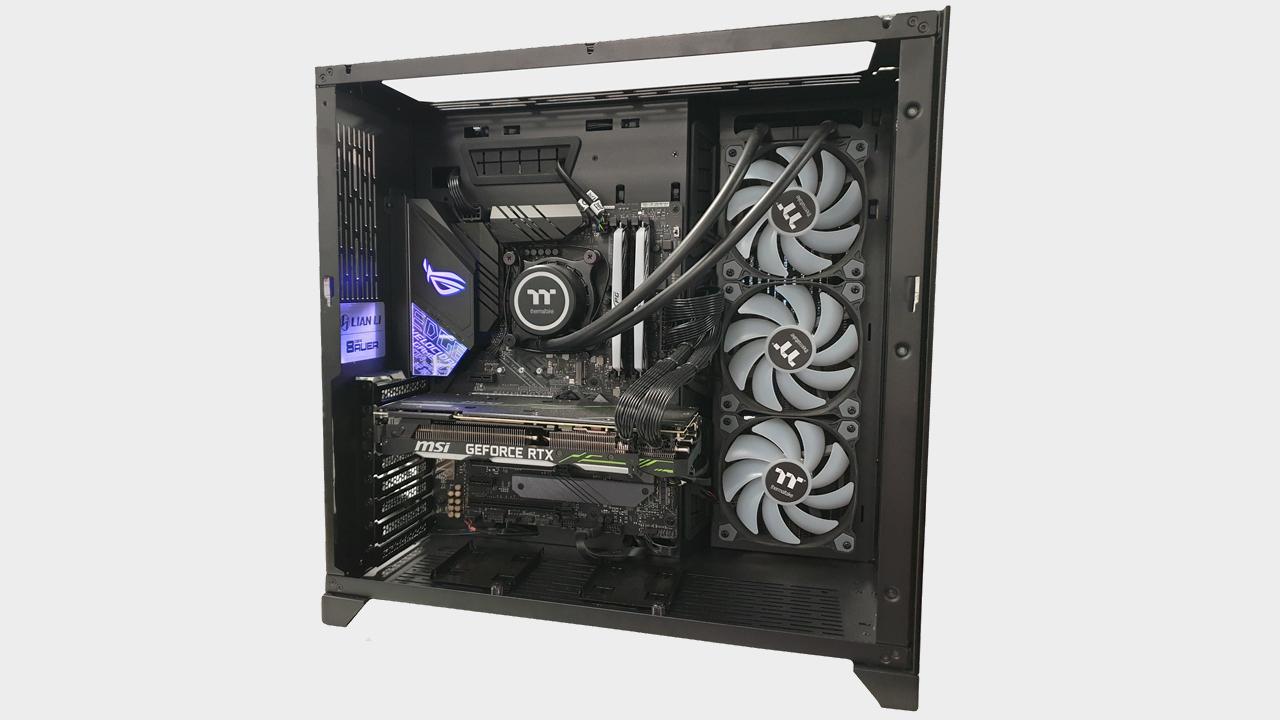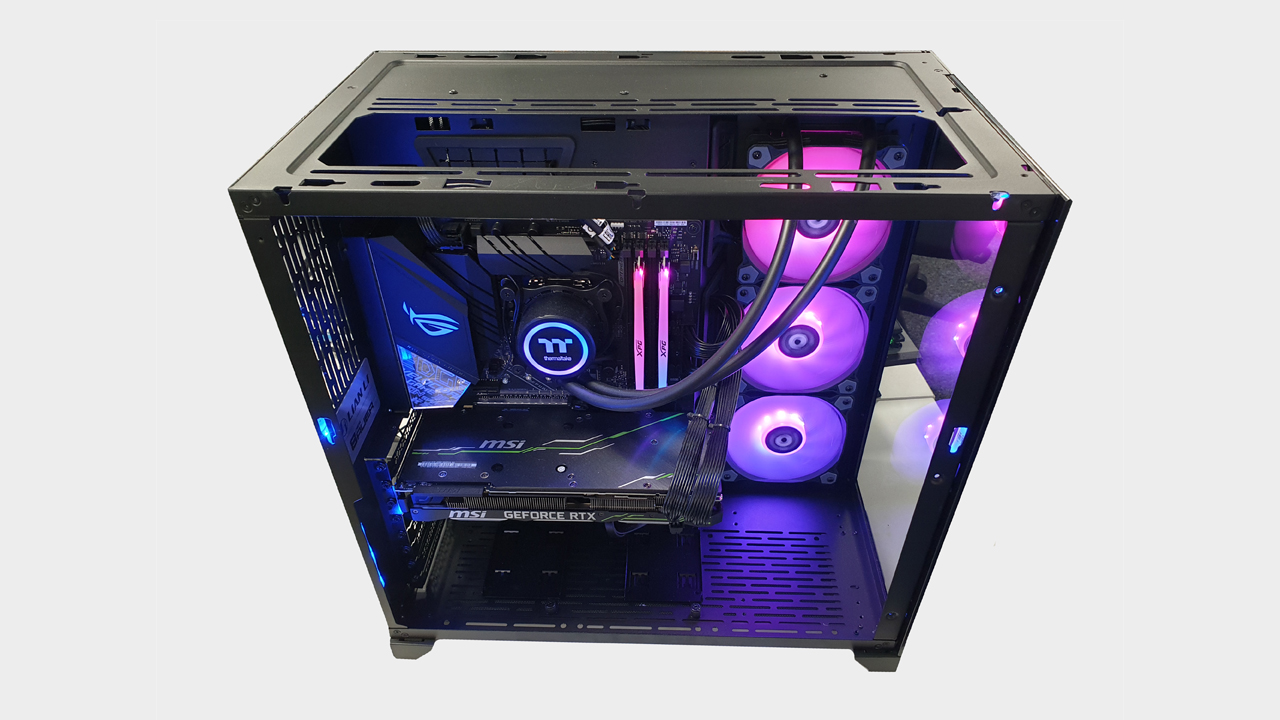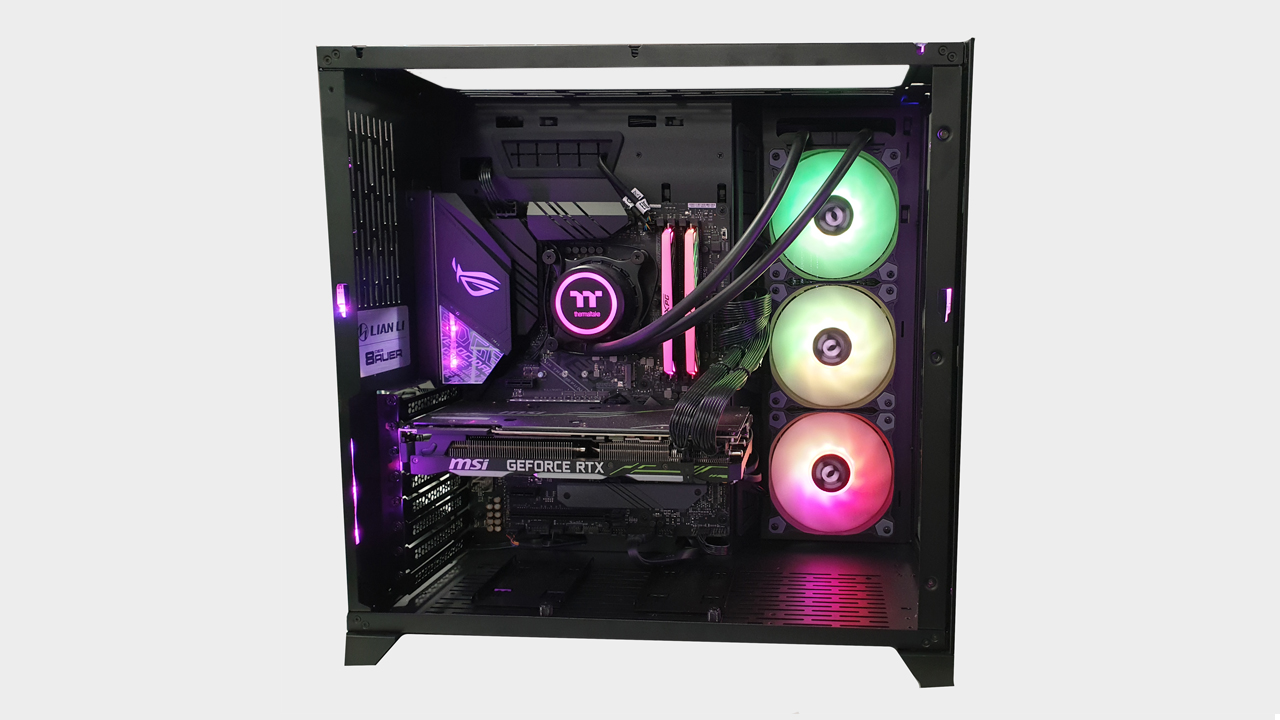Our Verdict
The Palicomp Asteroid is an impressive and fast gaming PC. You’d expect that for its high price tag, but its value goes beyond its high-end components.
For
- Thoughtful build
- Great value considering components
- Consistently runs games at max graphical settings
Against
- High price point
- Massive case
- Some wonky thumbscrews
PC Gamer's got your back
The Asteroid gaming PC from UK computer builder Palicomp is a large piece of kit in almost every way: physical size; quality of components; speed; and, unavoidably, price tag. The basic rig is £2100. As a result, it’s pitched firmly at the premium end of the the best gaming PC spectrum, though it shouldn’t be dismissed as over-priced. There’s build value and performance here that make the price of admission very reasonable.
GPU: MSI Nvidia GeForce Ventus RTX 2080 8GB
CPU: Intel Core i9-9900K, overclocked to 4.9GHz
Motherboard: Asus ROG Strix Z390-F Gaming
RAM: Adata 16GB DDR4 3600MHz
Storage: 2TB M.2 2280 Intel 660p Nvme SSD
PSU: Silverstone ET750-G Gold 750W PSU
CPU Cooling: Thermaltake 360mm Water 3.0 ARGB
Dimensions: 49.28 cm x 20.83 cm x 49.53 cm
Warranty: Three years (return to base)
Everything is housed in a wide, mid-tower case (a simple Lian Li PC-O11 model made of glass and dark metal), so it will take up a fair bit of space. But it looks subtle and refined thanks to the combination of materials and front-facing port arrangement. The glass panel on the left side gives a full-view of the components, including the fans; there are mesh vents directly behind those fans on the right side of the case, which you can somewhat see the fans through as well.
The chassis' top and side panel are easy to remove (although I had to use a screwdriver on our unit to remove the thumbscrews), and there’s a separate panel at the back for two additional HDDs or SSDs if you need more storage. The whole case is spacious and well-laid out inside, leaving plenty of room for future modifications and additions. The case also has sturdy feet that lift it up high enough for good airflow underneath.
Beyond the sturdiness and dimensions, there are some RGB lighting strips on inside edges that add a bit of fun and combine well with the colourful Thermaltake fans. Alongside this, the cable management is neat and tidy. It's clear where everything goes to and from. Nice. My only, very slight, concern with the design package as a whole was a little bounce on the front panel when pushing in headphones or a USB connection into the ports, but it didn’t affect the connectivity.
Speaking of ports, the Asteroid is well-stocked on those. The front has two USBs, a mic and headphone jack, and a handy USB-C. The rear ports, motherboard and graphics card combined, total four display ports, two HDMIs, all the audios including optical, five USBs and two more USB-Cs. It’s all incredibly accessible, neat, and will covered multiple devices. Could the case be slightly fancier for a £2100 PC? Yeah, maybe, although there’s a lot to be said for keeping things understated in our nightmarish world of excess RGB.

Inside is where it gets really tasty with the following headline attractions: an Intel i9-9900K CPU overclocked to 4.9GHz; Nvidia GeForce RTX 2080 8GB GPU; an Asus ROG Strix Z390-F gaming motherboard; and a 2TB Intel M.2 2280 NVMe SSD. This is the Asteroid’s basic build and default arrangement of components. Now, a PC of this build could benefit from another 16GB of RAM, but what's there already, 16GB of Adata DDR4 3600MHz, is enough. But you can always swap that out or add more in yourself if you feel the need for more RAM.
The Asteroid spits out some healthy 3D Mark numbers, although that was expected. On Time Spy (DirectX 12) the Asteroid reached a dizzying 10730 aligning it with the top 6 percent of PCs tested on the software, and reached an enormous 23009 on Fire Strike (1080p), smashing it into the top 3 percent of data from machines tested.
Pushing it further, the Asteroid scored 12162 on Fire Strike Extreme (1440p), which was better than 86 percent of other tests submitted. On Fire Strike Ultra (4K) it spouted a score of 6321, better than 68 percent of others. A little slide, but synthetic benchmarks usually push any system a bit harder than playing a single game.
Cinebench showed some great numbers for the overclocked CPU: the multicore test scored at 4798 and single core scored at 498. Consistently, this is a well-performing machine that can provide the numbers to back it up. In addition, the loading times for whatever we threw at the PC, from Windows bootups to multiple games, is what you’d expect from the internal SSD; CrystaDiskMark gave me readings of 1805 for reading and 1944 for writing.

Turning to our usual in-game benchmarking tests, the Asteroid performed well on the whole, capable of hitting 60 fps or higher at 1080p and 1440p, while dipping below at 4K.
Total War: Warhammer II averaged 100 fps at 1080p and 75 fps at 1440p. Cranking the resolution to 4K brought everything back to reality a little with a respectable result of 42 fps. Ghost Recon: Wildlands had some similar disparities: at 4K on ultra, the fps averaged out at 38, whereas 1440p gave me a steady 60 fps. For reference, there was a noticeable bump up again when toning down the setting to very high, with a 4K resolution providing 53 (ish) fps and at 1440p a level of 87-odd fps—the latter being probably the smoothest and most enjoyable experience all round in that game.
Unfortunately, when I tried to run benchmarks in Shadow of the Tomb Raider, it crashed to the desktop every time, even after updating the appropriate drivers. I did try some other games, like Metro Exodus. On max graphics settings and with ray tracing turned on, it hit some pretty impressive numbers, never even coming close to dipping under 60 fps according to GeForce Experience. It was always higher, even with those maxed out settings and some demanding scenes and action sequences. Apex Legends performed higher than 100 fps on max graphics setting without hiccups or drops in performance, stuttering or crashes.
All this points to the Asteroid being capable of 4K gaming, but not a consistent high performer in that glorious resolution. This is no disaster, as it consistently maintains both high numbers and high performance at the 1440p resolution, and would likely performs well with other ray tracing compatible games.

This Asteroid configuration will run any game you throw at it on maximum (or at least near maximum) settings, and will continue to be able to do so for, I’d wager, a couple more years. If you want to 'future-proof' it immediately (and maybe not eat for another couple of months), the ability to build it up even further, by adding more/better parts on Palicomp’s website is a bonus.
Overall, the entire system is fairly priced, even if it's on the high side. Using the usual vendors like eBuyer, Amazon, and Box to look up current pricing, I was pleasantly surprised to find that I was able to price up the components at just under £2100, which means that getting all of those, plus construction and delivery, and a three-year warranty in this model for pretty much the same cost.
Considering someone else is building this for you and you get a healthy warranty, the value is undeniable—if you can part with several mortgage payments at once, of course.
The Palicomp Asteroid is an impressive and fast gaming PC. You’d expect that for its high price tag, but its value goes beyond its high-end components.



